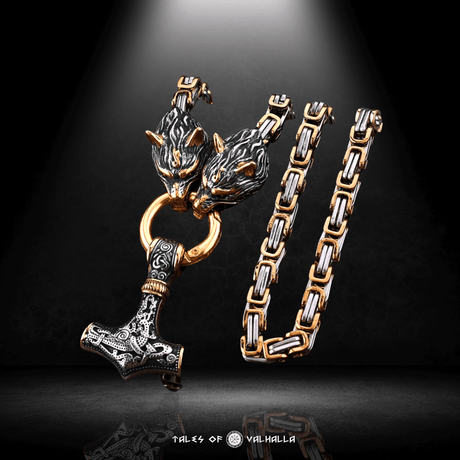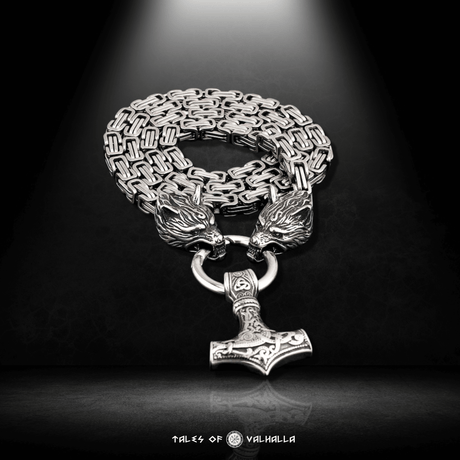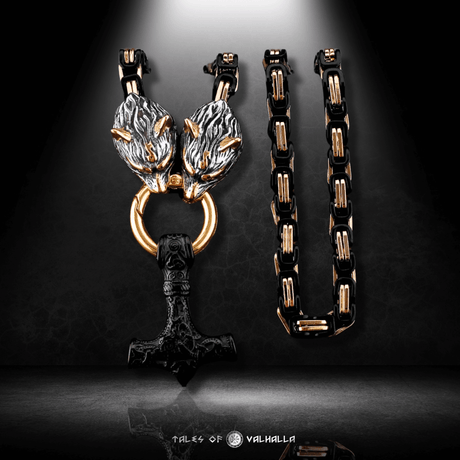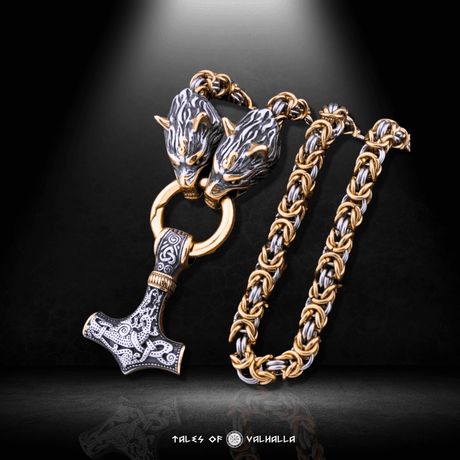Introduction to Viking Lore
When we think of Vikings, our minds often jump to images of fierce warriors, longships cutting through icy waters, and gods with mighty hammers. But behind these iconic images lies Viking lore—a rich tapestry of myth, legend, and history that shaped Viking beliefs, customs, and the Norse worldview. This lore, preserved in epic tales known as the Eddas and Sagas, dives deep into Viking life, both human and divine, and introduces us to gods and heroes whose stories have influenced literature and pop culture for centuries. This blog will explore the cornerstones of Viking lore, examining how the Eddas and Sagas have preserved a mythology that is as inspiring as it is timeless.
The Foundation of Norse Literature
Viking lore, as recorded in ancient texts, was deeply rooted in the Old Norse language. This language, spoken by the Vikings, was the medium through which these stories and myths were passed down orally. Storytelling was a fundamental aspect of Viking life, a way for people to keep their history, values, and beliefs alive. It wasn't until the 13th century, centuries after the Viking Age, that these tales were committed to writing in Iceland. By this time, the Viking Age had ended, but the Icelandic writers and poets were committed to preserving these oral traditions.
The Old Norse language, related to modern Icelandic, captured not only the stories but also the Viking spirit. These tales were carefully written down, ensuring that even as societies changed, the lore and legends of Viking ancestors would endure. The act of preserving these stories allowed future generations to glimpse into Viking society, offering a precious link to their world of seafaring, survival, and spirituality.
The Eddas: The Cornerstone of Norse Mythology
The Eddas are essential sources for understanding Viking mythology and lore. Divided into the Poetic Edda and the Prose Edda, these collections give us insight into the Norse pantheon, the world of giants, dwarfs, and the apocalyptic Ragnarök.
The Poetic Edda
The Poetic Edda, also known as the Elder Edda, is a compilation of poems that date back to the 10th century or earlier. Unlike most modern literature, these poems are not arranged in a narrative order; instead, they present individual stories and myths about gods, heroes, and even moral lessons. Central to these poems are the lives and deeds of gods like Odin, Thor, and Loki, as well as the adventures of humans and supernatural beings.
The Poetic Edda
One of the most famous poems is the Völuspá ("Prophecy of the Seeress"), a narrative about the creation and eventual destruction of the world. Here, we learn about Yggdrasil, the World Tree, and the creatures that inhabit different realms, from Asgard to Midgard to Niflheim. Another essential poem, Hávamál ("The Sayings of the High One"), is attributed to Odin himself, filled with wisdom, practical advice, and ethical teachings that reflect the Viking code of honor and survival. Through the Poetic Edda, readers gain an understanding of the Viking cosmology and the values that shaped their society.
The Prose Edda
The Prose Edda, or Younger Edda, was composed by Snorri Sturluson, an Icelandic historian, poet, and politician, around 1220. Unlike the Poetic Edda, the Prose Edda is a single cohesive text that serves as both a guide to Norse mythology and a handbook for skalds, the Norse poets. Written in a prose format, this Edda offers detailed accounts of Norse gods and their actions, explaining complex mythological concepts in a way that is accessible and engaging.

The Prose Edda
One key aspect of the Prose Edda is its portrayal of Ragnarök, the Viking apocalypse. Snorri’s descriptions of this cataclysmic event depict the fall of gods, the destruction of the world, and its eventual rebirth. Stories within the Prose Edda introduce us to significant Norse gods, such as Odin, who sacrifices himself on Yggdrasil to gain knowledge of the runes, and Thor, known for his epic battles against the giants. Snorri also includes tales about lesser-known gods and creatures, broadening the reader's view of Viking lore and the supernatural forces believed to influence their world.
Norse Sagas: Heroes, Adventures, and the Viking Spirit
If the Eddas form the backbone of Norse mythology, the sagas provide a window into Viking society. These prose narratives recount the lives, struggles, and achievements of legendary Norse figures and their families, blending historical events with myth and legend.
Sagas as Stories of Viking Life
The sagas, like the Eddas, were written down in Iceland after the Viking Age but are believed to reflect earlier oral traditions. There are several types of sagas, including family sagas, king sagas, and legendary sagas. Family sagas, also known as the Íslendingasögur or Icelandic Sagas, are perhaps the most realistic, depicting life in Iceland and Scandinavia with themes of feuds, revenge, and loyalty. They provide a glimpse into Viking customs, legal disputes, and even everyday concerns like marriage, farming, and survival.
Legendary sagas, on the other hand, focus more on heroes and mythical events, often incorporating elements of Norse mythology. These sagas are less grounded in reality and instead emphasize themes of heroism and adventure. They introduce characters who, though human, possess god-like qualities and undertake supernatural quests. The Sagas create an image of the Viking people as explorers, warriors, and adventurers, grounded in their relationships and sense of honor.

Sagas as Stories of Viking Life
Epic Stories from the Sagas
Some sagas have gained legendary status, such as The Saga of Egil Skallagrimsson and The Saga of the Ynglings. The Saga of Egil Skallagrimsson recounts the life of Egil, a poet, warrior, and farmer with a fierce temper and remarkable wit. Egil’s life, filled with family feuds, Viking raids, and exile, captures the rough-and-tumble world of the Vikings and their unforgiving code of honor.
Meanwhile, The Saga of the Ynglings traces the origins of the Yngling dynasty, believed to descend from Norse gods. This saga presents an intricate web of kingship, mythology, and Norse beliefs about fate and destiny. It also shows the complex relationship between Viking rulers and their divine ancestry, which often justified their authority.
Themes and Symbols in Viking Lore
Both the Eddas and Sagas are rife with themes and symbols that resonate deeply within Viking lore. These recurring ideas, motifs, and symbols add richness and layers of meaning to Norse mythology.
Common Themes
Viking lore is permeated with themes that reveal the Norse worldview. Honor and loyalty were paramount values, often depicted through characters who prioritized family and kin, even if it meant going to war. Fate or "wyrd," an inescapable force in Viking life, reminds us that life was seen as predetermined by forces beyond human control.
Other common themes include the pursuit of glory, the inevitability of death, and the hope for rebirth. These values shaped Viking beliefs in the afterlife, where warriors who died gloriously in battle would be welcomed into Valhalla. This concept of a warrior’s heaven influenced the Vikings’ approach to combat and life itself.
Iconic Symbols and Motifs
Symbols like Yggdrasil (the World Tree), Mjölnir (Thor’s hammer), and ravens play significant roles within Viking lore. Yggdrasil connects all realms and serves as a cosmic anchor for Norse mythology, representing the interconnectedness of life, death, and the afterlife.
Thor’s hammer, Mjölnir, represents protection, strength, and divine intervention, often invoked by warriors and worn as an amulet. Ravens too, especially those associated with Odin, symbolize wisdom, foresight, and the god’s power. These motifs remind us of the Vikings’ reverence for nature and the supernatural, reflecting a worldview that saw the divine as part of everyday life.
The Influence of Viking Lore on Modern Culture
Norse mythology has had a profound impact on contemporary culture, from literature to popular media. Viking lore has become a staple in books, movies, TV series, and video games, often reimagined to suit modern tastes and aesthetics.
Impact on Literature and Media
Works like The Lord of the Rings and The Chronicles of Narnia were heavily inspired by Norse mythology. In cinema and television, characters like Thor and Loki from Marvel Comics and the TV series Vikings have introduced Viking lore to new generations, sparking interest in Viking beliefs, gods, and legends.
Movies like Thor and TV shows like American Gods depict Norse deities, often blending them with modern themes. These portrayals, while modernized, draw heavily on original Norse stories, connecting viewers with a mythology that remains relevant even in the 21st century.
The Appeal of Norse Mythology
So, why does Norse mythology continue to capture our imagination? For many, Viking lore offers a sense of adventure, mystery, and power, appealing to those who seek stories of strength and resilience. The tales of gods, mythical creatures, and cosmic battles have a universal quality, tapping into themes that resonate with audiences across time and culture.
The archetypes of the Viking hero, the wise Odin, the mighty Thor, and the trickster Loki are timeless, embodying traits that people still admire, fear, and aspire to. Viking lore reminds us of the mystery of life and the power of myth to connect us with universal truths.
Where to Explore Viking Lore Further
For those intrigued by Viking lore, many resources are available to delve deeper into these captivating stories. Some classic and accessible texts include:
- The Poetic Edda: This collection of poems provides foundational knowledge about the Norse gods, cosmic events, and the Viking view of life and death.
- The Prose Edda by Snorri Sturluson: A go-to for understanding Norse mythology and epic tales, this text is essential for anyone interested in the origins of Viking beliefs.
- The Sagas of Icelanders: Collections such as The Saga of Egil Skallagrimsson and The Saga of the Ynglings bring to life the everyday dramas and heroic deeds of Viking society.
Many modern authors, like Neil Gaiman and Joanne Harris, have also reimagined Norse mythology, offering accessible and engaging adaptations of classic Norse stories.
Conclusion
Viking lore is a timeless legacy, woven into the fabric of Nordic culture and kept alive through the Eddas, sagas, and countless stories passed down through generations. These tales, while ancient, provide a timeless lens through which we can explore universal themes like honor, courage, loyalty, and destiny. Whether you’re drawn to the gods’ epic struggles, the heroism of saga characters, or the wisdom embedded in Norse poetry, Viking lore invites you to journey into a world of adventure and discovery.
As you explore Viking lore, remember that these stories, though rooted in the past, are as relevant today as ever. In learning about the Norse gods, their battles, and their wisdom, we not only gain insight into the Viking Age but also connect with timeless ideas that continue to inspire and challenge us. Embrace the adventure—Viking lore awaits!






























































































